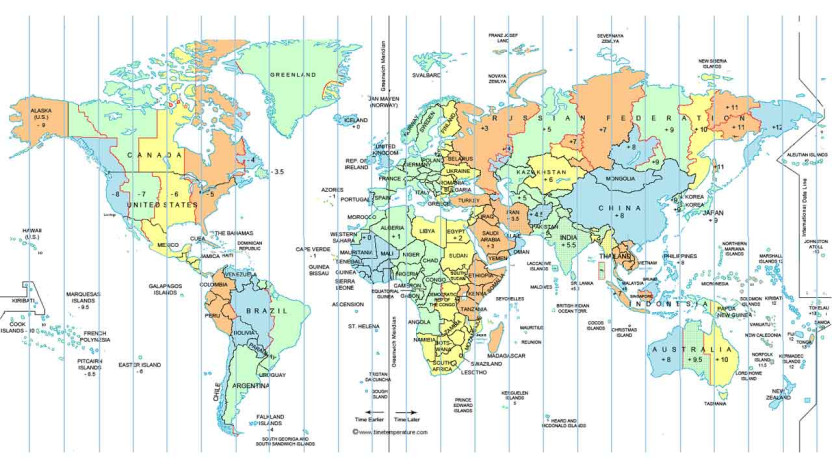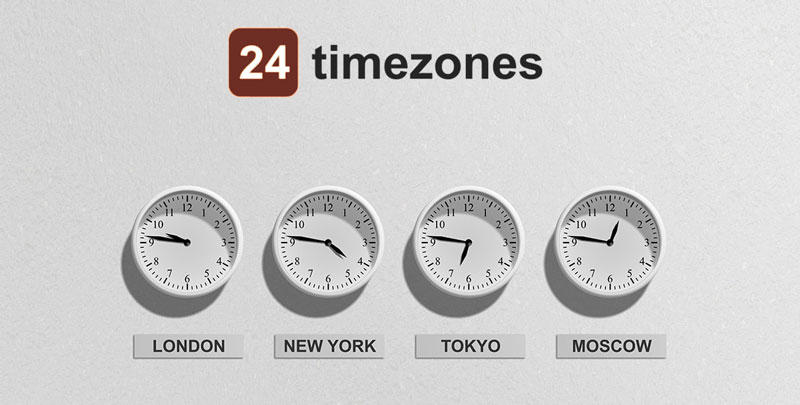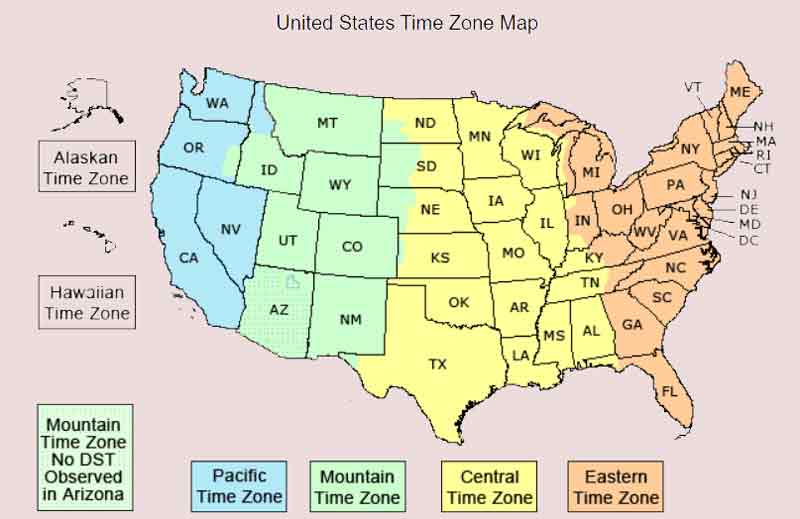
In a world connected by globalized communication, it’s no surprise why the concept of time zones and their role in navigating our planet's temporal diversity are really, really crucial. Time zone map, the visual representation of different time zones worldwide, serves as a key tool for understanding and managing time differences across the globe. Curious about the purposes of time zones, how they work, and what the most common time zones on the map are? If so, this post is just for you; read along to find out now.
Time zones are geographical areas or regions that follow a uniform standard time to facilitate global timekeeping and coordination.
In other words, time zones refer to areas or locations where the same standard time is observed. As you can probably guess, the concept of time zones originated from the need to synchronize clocks across different locations.
This way, people worldwide all have a common understanding of the time of day, so they can efficiently communicate and prepare schedules. Time zones are established according to the Earth’s spin on its axis, which completes one full rotation every 24 hours.
Due to Earth’s rotations on its axis, different locations of our planet go through periods of daylight and darkness at different times. So, to create a standardized system, the Earth is divided into longitudinal sections, and each time zone is generally 15 degrees longitude wide, which corresponds to one hour of difference in time.

As for the time zone map, it’s simply a graphical representation of the time zones around the world and the cities observing them.
Indeed, a time zone map is essential and helpful for a bunch of reasons and purposes, such as coordinating travel, global communication, and business across different regions and countries, as well as understanding the natural and cultural diversity of the world.
The time zone system is based on the Earth's rotation on its axis, which, as mentioned recently, takes 24 hours to complete an entire spin. As the Earth rotates, different regions worldwide receive different amounts of sunlight at different times.
For example, when it’s noon in the U.S., it may be midnight somewhere in Asia. That’s why it’s vital to create a standard time system worldwide.
All time zones are based on the longitude of the region, which is the distance east or west of the Prime Meridian. There are 24 major time zones around the globe, each spanning 15 degrees of longitude and differing by one hour from the next.
That means that when it is midnight in the Florida time zone map, for instance, it will be 11 p.m. in the next time zone to the west and 1 a.m. the next day in the next time zone to the east. It’s worth noting that the Prime Meridian, passing through Greenwich, England, serves as the reference point for the whole time zone system.
Each zone has to be assigned a specific time offset from Coordinated Universal Time (UTC), formerly referred to as GMT (Greenwich Mean Time), ranging from UTC-12 to UTC+14. For example, the Central Time Zone (CT) is UTC−06:00, meaning it is 06 hours behind UTC.

Today, the number of time zones available is so large that it’s not an exaggeration to say that they can’t be counted on your fingers. Some countries and regions, such as Iran, Sri Lanka, India, or Nepal, use offsets of 30 or even 45 minutes instead of the standard 1 hour.
In fact, there would be just 24 time zones in total if the one-hour offsets were consistently implemented. However, with the use of 30-45 minute offsets by different countries, an increasing number of time zones have been established, resulting in a large number of time zones that may not be globally recognized.
As for the U.S., the 50 states of the U.S. main country are spread across 06 different standard time zones on the United States time zone map, including:
Note: When including both inhabited and uninhabited dependencies, the total number of time zones in the USA time zone map is 11, according to Y-AXIS.com.
Here is the list of 12 of the most common time zones on the world’s time zone map; let’s take a look:
Time zone name | Abbreviation | Offset | Location |
Australian Eastern Standard Time | AEST | UTC +10:00 | Australia |
Australian Central Standard Time | ACST | UTC +9:30 | Australia |
Alaska Standard Time | AKST | UTC -9:00 | North America |
Atlantic Standard Time | AST | UTC -4:00 | North America Atlantic Caribbean |
Central Africa Time | CAT | UTC +2:00 | Africa |
Central European Time | CET | UTC +1:00 | Europe Africa |
Central Standard Time | CST | UTC -6:00 | North America Central America |
Eastern Africa Time | EAT | UTC +3:00 | Africa Indian Ocean |
Eastern European Time | EET | UTC +2:00 | Europe Asia Africa |
Moscow Standard Time | MSK | UTC +3:00 | Europe Asia |
Pacific Standard Time | PST | UTC -8:00 | North America |
Coordinated Universal Time | UTC | UTC | Worldwide |
Major Time Zones Worldwide
Now, you no longer wonder why different locations of the world observe diverse times and why there are so many time zones in the world’s time zone map and UTC time zone map.
Time zones and time calculation tools are closely related in several ways, each playing a crucial role in how we manage and understand time across different regions of the world. Here’s how they are connected:
Understanding Global Time Differences: Time zones are essential for recognizing the time differences between various geographical locations around the world. Time calculation tools often include features that allow users to convert time from one zone to another effortlessly. This is particularly useful for scheduling international meetings, flights, or any event that involves participants from multiple time zones.
Facilitating Daylight Saving Time Adjustments: Many countries implement Daylight Saving Time (DST), adjusting clocks during the warmer months to extend evening daylight. Time calculation tools automatically account for these changes in their calculations, ensuring that the time displayed or converted is accurate according to whether a region is currently observing DST.
Simplifying Time-Related Calculations: Time calculation tools can simplify complex calculations that involve time zones and DST adjustments. For instance, calculating the time difference between two international cities, considering one or both might be observing DST, can be complex. Time calculators handle these calculations seamlessly, providing accurate results without the need for manual computation.
Planning and Coordination Across Time Zones: For businesses and individuals who operate or communicate across different time zones, time calculation tools are indispensable for planning and scheduling. They help avoid confusion and ensure that meetings, deadlines, and events are synchronized despite the geographical distances.
Educational and Awareness Purposes: Time calculation tools also serve an educational purpose, helping people understand the concept of time zones, how they affect the perception of time, and the rationale behind DST. This awareness is crucial in a globalized world where time-sensitive coordination across borders is a daily necessity.
Without a doubt, it would be impossible to imagine a world without timer zones and time zone maps. Chaos would ensue as international communication could see disruption, global travel could be thrown into disarray, and businesses could struggle to coordinate across continents. But luckily, this chaos would be impossible thanks to the implementation of diverse time zones worldwide.